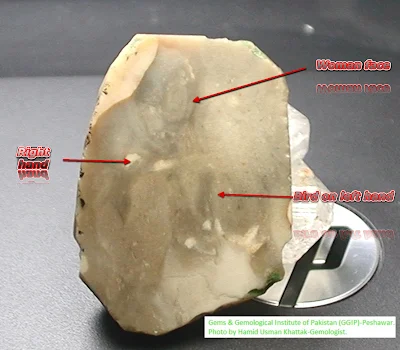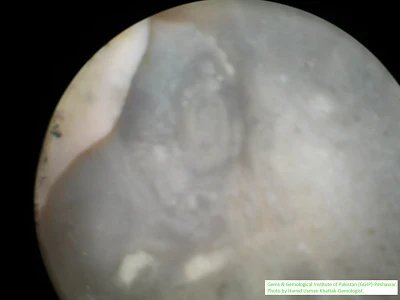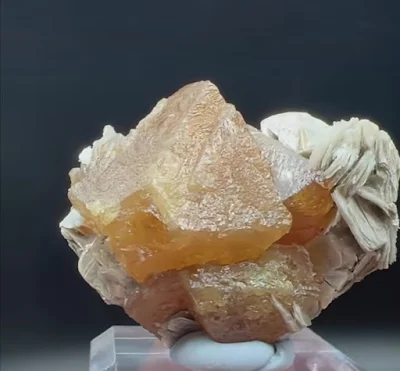Labels
- Organic Gemstones (8)
- Inorganic gemstones (6)
- Videos (5)
- Gemstones (2)
- rare gems (2)
- Important websites (1)
- Mimetoliths (1)
Wednesday, December 25, 2024
Tuesday, December 24, 2024
Monday, December 23, 2024
Emeralds from Ethiopia
Emeralds from Ethiopia
Ethiopia, known for being the oldest independent country in Africa and one of the oldest in the world. Its breathtaking landscapes, range from mountains over 4500m high to salt plains 150m below sea level (Springer). The beauty of Ethiopia extends to its minerals with opals being one of their most famous gems. Now, with the discovery of emeralds, Ethiopia is now providing an ethical source of emeralds to the gem trade.
Emerald Mining Districts
The major emerald mining districts in Ethiopia are the Shakiso district in the Oromia region, and the Kenticha and Borena mines. Ethiopian emeralds display a diverse range of colours, including deep green, bluish-green, and sometimes yellowish-green shades. This colour range is determined by the presence and concentration of chromium and vanadium, which gives the gemstone its distinctive green hue. Ethiopian emeralds typically exhibit high levels of transparency and clarity, which enhances their visual appeal.
Growing Demand
Emeralds from Ethiopia have experienced a steady increase in demand since their discovery, as their unique characteristics have attracted attention from gemstone enthusiasts and collectors worldwide. While Ethiopian emeralds have not yet achieved the same level of recognition as their Colombian or Zambian counterparts at high-profile auctions, they have been gradually gaining ground.
Sustainable Mining
The Ethiopian government has implemented mining laws and regulations to ensure that mining companies comply with environmental protection guidelines, minimize the ecological impact, and promote sustainability (Empyrean Gems).
Mimetolith Topographic on chert
This Mysterious Stone Reveals the Face of an Old Lady – Naturally Formed or Nature’s Art?
Discover a rare mimetolith – a naturally occurring stone that eerily resembles the face of an old lady. Nature’s sculpture or just coincidence? You decide
Have you ever seen a stone so realistic, it seems like Mother Nature carved it herself? You're about to witness one of the most intriguing mimetoliths ever discovered – a naturally formed chert stone with the astonishing topographic appearance of an old lady's face. This isn’t a sculpture or a manmade carving – it’s 100% natural.
What is a Mimetolith?
A mimetolith is a naturally occurring rock, mineral specimen, or loose stone that resembles the shape or pattern of something recognizable, like a human face, animal, tree, or even a plant. These fascinating forms are created by millions of years of geological activity, erosion, and mineral deposit patterns.The Viral Stone: A Chert with a Story to Tell
The stone in the image is a piece of chert, a hard and fine-grained sedimentary rock known for its durability and unique visual features. What makes this specimen truly extraordinary is the clearly visible formation that mirrors the profile of an elderly woman, complete with what appears to be facial contours, eyes, a nose, and even a suggestion of wrinkled skin.
Why This Mimetolith Is Going Viral
-
The resemblance is shockingly lifelike
-
It’s a one-in-a-million geological formation
-
Viewers are calling it “Nature’s Mona Lisa”
-
It's sparking debate: natural coincidence or divine artistry?
Perfect for Rock Collectors and Mystery Lovers
Whether you’re a passionate geology enthusiast, a lover of natural wonders, or someone fascinated by pareidolia (the human tendency to see faces in objects), this mimetolith is bound to capture your imagination.
Watch this video for more information
All about "Yooperlite".
"Yooperlite" is a trade name used to refer to fluorescent pebbles found along the beaches of Lake Superior in Michigan. These unique rocks are a type of syenite containing the mineral sodalite, which exhibits a distinct fluorescence when exposed to ultraviolet (UV) light.
Yooperlite video
The term "Yooperlite" pays homage to the residents of Michigan's Upper Peninsula, who are colloquially known as "Yoopers." Using a UV fluorescent light to illuminate these rocks reveals their captivating glow, making them a popular find among rockhounds and collectors.
Sunday, December 22, 2024
Scheelite Details
Scheelite Information
Scheelite is a calcium tungstate mineral with the chemical formula CaWO4. It is an important ore of tungsten, used in the production of tungsten alloys and for making filaments for electric lamps.
Physical Properties of Scheelite
- Color: brownish yellow, orange, greenish yellow, yellow, brown, black, colorless
- Crystal System: Tetragonal
- Hardness: 4.5 - 5.0
- Cleavage: {110} Indistinct, {001} Indistinct
- Luster: Vitreous (Glassy)
- Streak: White
- Transparency: Transparent, Translucent
- Specific Gravity: 5.9 - 6.1 (Heavy)
- Diaphaneity: Transparent to translucent
Optical Properties of Scheelite
Occurrences of Scheelite
Scheelite is found in hydrothermal veins, granitic rocks, and in skarns. It is also found in contact metamorphic deposits and in high-temperature greisen deposits. It is commonly associated with minerals such as calcite, fluorite, apatite, wolframite, molybdenite, and topaz.
Similar Topics
Friday, December 20, 2024
Premier Rose Diamond
Premier Rose Diamond
Overview
One of the most significant diamonds found in the Premier mine (now the Cullinan mine) in South Africa was the 353.9 carat (ct) Premier Rose rough.
The diamond crystal was found in 1978 and named after Rose Mouw who helped plan and mark it for cutting.
She and her husband Joe Mouw, owners of Mouw Diamond Cutting Works, purchased the rough diamond and partnered with William Goldberg to cut it into three gems – the Premier Rose (D-Flawless pear diamond weighing 137.02 ct), Little Rose (31.48 ct D-Flawless pear diamond), and Baby Rose (2.11 ct D-Flawless round brilliant diamond). The Premier Rose took six months to plan and cut.
Specifications
- Weight: 137.02 carats
- Cut: Pear
- Color: D-FlawlessRelated Topics:
Introduction quiz
💎 Gemology Quiz 1. What does gemology study? The study of rocks only The study of gemstones and their p...
-
Gemstone MCQs Quiz Test Your Knowledge in Gemology Part 6 1. A 2-carat fine-quality...























